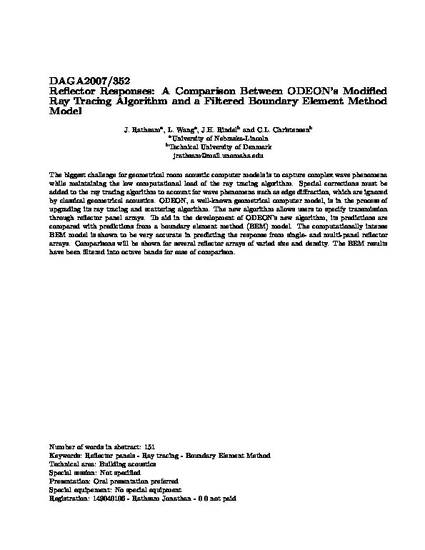
The biggest challenge for geometrical room acoustic computer models is to capture complex wave phenomena while maintaining the low computational load of the ray tracing algorithm. Special corrections must be added to the ray tracing algorithm to account for wave phenomena such as edge diffraction, which are ignored by classical geometrical acoustics. ODEON, a well-known geometrical computer model, is in the process of upgrading its ray tracing and scattering algorithm. The new algorithm allows users to specify transmission through reflector panel arrays. To aid in the development of ODEON’s new algorithm, its predictions are compared with predictions from a boundary element method (BEM) model. The computationally intense BEM model is shown to be very accurate in predicting the response from single- and multi-panel reflector arrays. Comparisons will be shown for several reflector arrays of varied size and density. The BEM results have been filtered into octave bands for ease of comparison.
Available at: http://works.bepress.com/lilymwang/17/

Presented at DAGA 2007, Stuttgart, March 2007. Published in Fortschritte der Akustik 33:2 (2007), pp. 577-78.